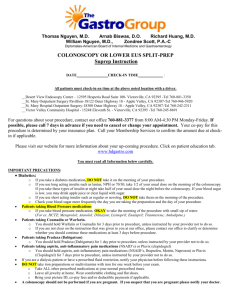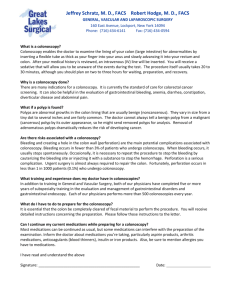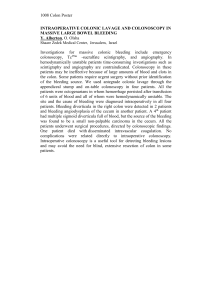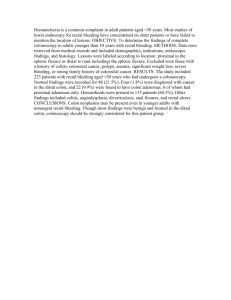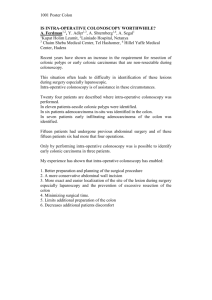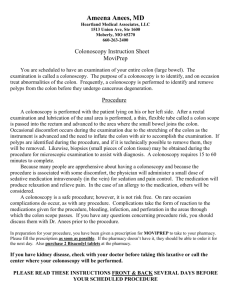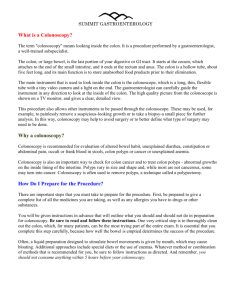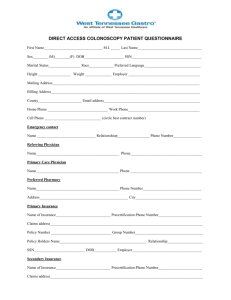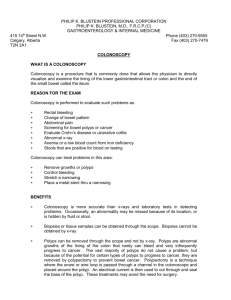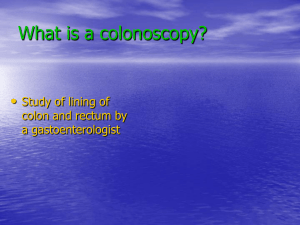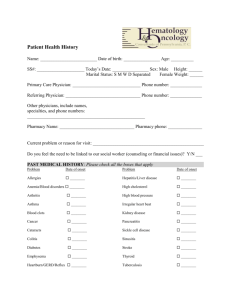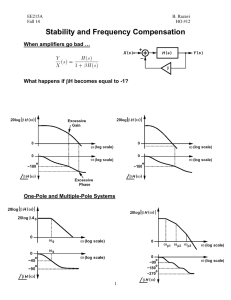Understanding Colonoscopy - M.H. Razavi, M.D.
advertisement
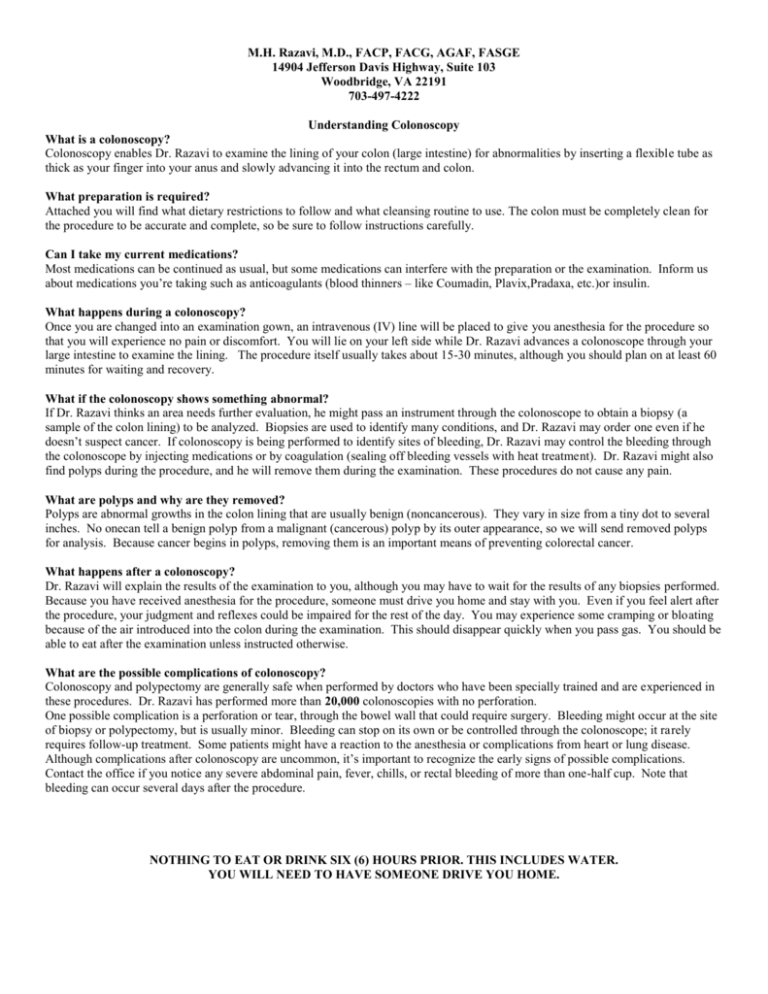
M.H. Razavi, M.D., FACP, FACG, AGAF, FASGE 14904 Jefferson Davis Highway, Suite 103 Woodbridge, VA 22191 703-497-4222 Understanding Colonoscopy What is a colonoscopy? Colonoscopy enables Dr. Razavi to examine the lining of your colon (large intestine) for abnormalities by inserting a flexible tube as thick as your finger into your anus and slowly advancing it into the rectum and colon. What preparation is required? Attached you will find what dietary restrictions to follow and what cleansing routine to use. The colon must be completely clean for the procedure to be accurate and complete, so be sure to follow instructions carefully. Can I take my current medications? Most medications can be continued as usual, but some medications can interfere with the preparation or the examination. Inform us about medications you’re taking such as anticoagulants (blood thinners – like Coumadin, Plavix,Pradaxa, etc.)or insulin. What happens during a colonoscopy? Once you are changed into an examination gown, an intravenous (IV) line will be placed to give you anesthesia for the procedure so that you will experience no pain or discomfort. You will lie on your left side while Dr. Razavi advances a colonoscope through your large intestine to examine the lining. The procedure itself usually takes about 15-30 minutes, although you should plan on at least 60 minutes for waiting and recovery. What if the colonoscopy shows something abnormal? If Dr. Razavi thinks an area needs further evaluation, he might pass an instrument through the colonoscope to obtain a biopsy (a sample of the colon lining) to be analyzed. Biopsies are used to identify many conditions, and Dr. Razavi may order one even if he doesn’t suspect cancer. If colonoscopy is being performed to identify sites of bleeding, Dr. Razavi may control the bleeding through the colonoscope by injecting medications or by coagulation (sealing off bleeding vessels with heat treatment). Dr. Razavi might also find polyps during the procedure, and he will remove them during the examination. These procedures do not cause any pain. What are polyps and why are they removed? Polyps are abnormal growths in the colon lining that are usually benign (noncancerous). They vary in size from a tiny dot to several inches. No onecan tell a benign polyp from a malignant (cancerous) polyp by its outer appearance, so we will send removed polyps for analysis. Because cancer begins in polyps, removing them is an important means of preventing colorectal cancer. What happens after a colonoscopy? Dr. Razavi will explain the results of the examination to you, although you may have to wait for the results of any biopsies performed. Because you have received anesthesia for the procedure, someone must drive you home and stay with you. Even if you feel alert after the procedure, your judgment and reflexes could be impaired for the rest of the day. You may experience some cramping or bloating because of the air introduced into the colon during the examination. This should disappear quickly when you pass gas. You should be able to eat after the examination unless instructed otherwise. What are the possible complications of colonoscopy? Colonoscopy and polypectomy are generally safe when performed by doctors who have been specially trained and are experienced in these procedures. Dr. Razavi has performed more than 20,000 colonoscopies with no perforation. One possible complication is a perforation or tear, through the bowel wall that could require surgery. Bleeding might occur at the site of biopsy or polypectomy, but is usually minor. Bleeding can stop on its own or be controlled through the colonoscope; it rarely requires follow-up treatment. Some patients might have a reaction to the anesthesia or complications from heart or lung disease. Although complications after colonoscopy are uncommon, it’s important to recognize the early signs of possible complications. Contact the office if you notice any severe abdominal pain, fever, chills, or rectal bleeding of more than one-half cup. Note that bleeding can occur several days after the procedure. NOTHING TO EAT OR DRINK SIX (6) HOURS PRIOR. THIS INCLUDES WATER. YOU WILL NEED TO HAVE SOMEONE DRIVE YOU HOME.
